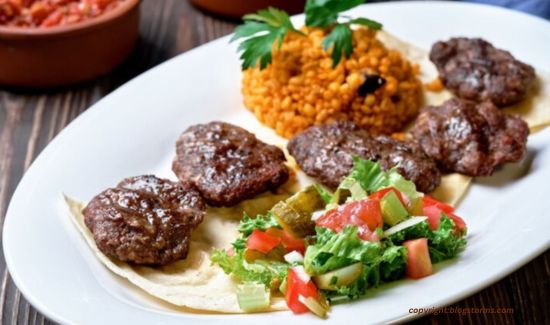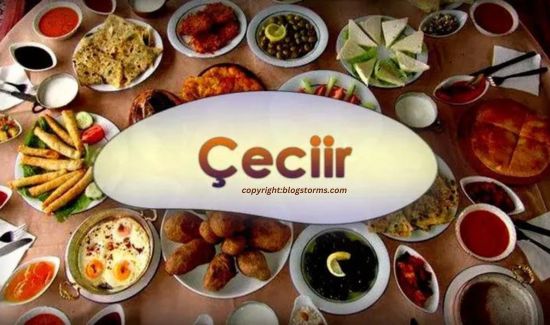çEciir treats are a delightful fusion of flavors and textures that have captivated taste buds for centuries. Originating from the ancient lands of Anatolia, çEciir treats hold a special place in culinary traditions, offering a diverse array of sweet and savory options to tantalize the palate. Whether enjoyed as a decadent dessert or a savory snack, çEciir treats never fail to leave a lasting impression with their rich taste and cultural significance.
Exploring the Origin of çEciir
The history of çEciir traces back to the heart of Anatolia, where it was first crafted by skilled artisans seeking to create a delectable treat fit for royalty. With its roots deeply embedded in Turkish culture, çEciir has evolved over the centuries, blending influences from various civilizations that once thrived in the region. Today, çEciir stands as a testament to the culinary heritage of Anatolia, cherished by locals and revered by food enthusiasts around the world.
Popular Varieties of çEciir Treats
Sweet çEciir Treats

Sweet çEciir treats offer a symphony of flavors, combining ingredients such as nuts, honey, and dried fruits to create irresistible confections. From classic baklava to delicate lokum, each sweet çEciir treat showcases the meticulous craftsmanship and attention to detail that define Anatolian cuisine.
Savory çEciir Treats
Savory çEciir treats offer a savory twist on traditional flavors, incorporating ingredients like cheese, herbs, and spices to create savory delights that are perfect for any occasion. Whether enjoyed as a snack or paired with a hearty meal, savory çEciir treats never fail to impress with their bold flavors and satisfying textures.
Health Benefits of çEciir
In addition to their exquisite taste, çEciir treats also offer a range of health benefits. Rich in antioxidants, vitamins, and minerals, çEciir treats are not only delicious but also nutritious, making them a guilt-free indulgence for health-conscious individuals. Furthermore, çEciir treats are often made with natural ingredients, free from artificial additives and preservatives, ensuring that every bite is packed with wholesome goodness.
çEciir Treats Recipes
Traditional Sweet çEciir Recipe
Ingredients:
- Phyllo dough
- Pistachios
- Walnuts
- Honey
- Butter
Instructions:
- Preheat the oven to 350°F (175°C).
- Layer phyllo dough in a baking dish, brushing each layer with melted butter.
- Sprinkle a mixture of chopped pistachios and walnuts over the top layer of phyllo dough.
- Drizzle honey evenly over the nuts.
- Put in the hot oven for 25-30 mins until it turns golden brown.
- Wait for it to cool, then slice into squares for serving.
Spicy Savory çEciir Recipe
Ingredients:
- Pastry dough
- Feta cheese
- Parsley
- Red pepper flakes
- Olive oil
Instructions:
- Roll out the pastry dough and cut into small squares.
- Place a small cube of feta cheese in the center of each square.
- Sprinkle chopped parsley and a pinch of red pepper flakes over the cheese.
- Fold the edges of the pastry dough over the filling to form a triangle shape.
- Spread a bit of olive oil on the triangle peaks.
- Bake in a preheated oven at 375°F (190°C) for 15-20 minutes, or until golden brown.
- Serve warm as a savory snack or appetizer.
Tips for Making the Perfect çEciir Treats
- Choose top-notch ingredients for tastier and smoother results.
- Pay attention to the consistency of the dough when preparing çEciir treats.
- Try mixing flavors to make your own special blends.
- Allow çEciir treats to cool completely before serving to enhance their flavor.
çEciir Treats Around the World
While çEciir treats have their roots in Anatolian cuisine, they have gained popularity worldwide, with variations found in countries across the globe. From Greece to Lebanon, çEciir treats have become a beloved delicacy, celebrated for their exquisite taste and cultural significance.
Incorporating çEciir in Modern Cuisine

In recent years, chefs and food enthusiasts have embraced çEciir as a versatile ingredient, incorporating it into modern dishes to add a unique twist to traditional recipes. From çEciir-infused desserts to savory çEciir-inspired entrees, the possibilities are endless when it comes to incorporating çEciir in modern cuisine.
çEciir Treats: A Cultural Symbol
Beyond its culinary appeal, çEciir holds deep cultural significance, serving as a symbol of hospitality, generosity, and celebration in Anatolian culture. Whether shared with loved ones during festive occasions or enjoyed as a daily indulgence, çEciir treats embody the warmth and richness of Anatolian hospitality.
çEciir Treats and Festivities
No celebration is complete without çEciir treats, which play a central role in many festive occasions and cultural ceremonies. From weddings to religious festivals, çEciir treats are a staple feature of Anatolian celebrations, symbolizing abundance, prosperity, and joy.
Where to Find Authentic çEciir Treats
For those eager to experience the authentic flavors of çEciir, a visit to Anatolia is a must. Here, travelers can explore bustling markets, artisanal shops, and local bakeries to discover a wide selection of çEciir treats made with time-honored techniques and traditional recipes.
çEciir Treats: A Unique Gift Idea
Seeking the ideal present for a special moment? Explore our selection for the perfect gift. Look no further than çEciir treats, which make for a thoughtful and memorable present. Whether packaged in elegant boxes or displayed in decorative tins, çEciir treats are sure to delight recipients with their exquisite taste and cultural charm.
çEciir Treats Enjoying Them Responsibly
While çEciir treats are undeniably delicious, it’s important to enjoy them in moderation as part of a balanced diet. By savoring çEciir treats mindfully and incorporating them into a healthy lifestyle, you can fully appreciate their exquisite taste while maintaining your well-being.
The Future of çEciir Treats
As culinary trends evolve and tastes change, one thing remains certain: the timeless appeal of çEciir treats. Whether enjoyed as a classic favorite or reimagined in innovative ways, çEciir treats are sure to continue captivating taste buds and bringing people together for generations to come.
FAQs
Q: What makes çEciir treats unique?
Ans: çEciir treats are unique due to their rich history, diverse flavors, and cultural significance. Made with high-quality ingredients and time-honored techniques, çEciir treats offer a taste of Anatolian hospitality unlike any other.
Q: Are çEciir treats suitable for vegetarians?
Ans: Yes, many çEciir treats are suitable for vegetarians, as they are made primarily from plant-based ingredients such as nuts, fruits, and pastry dough. Still, it’s smart to look at what’s in it to make sure.
Q: Can çEciir treats be made gluten-free?
Ans: While traditional çEciir treats typically contain gluten due to the use of pastry dough, it is possible to find gluten-free variations or adapt recipes to accommodate dietary restrictions. Using alternative flours such as almond or coconut flour can help create delicious gluten-free çEciir treats.
Q: How long do çEciir treats last?
Ans: çEciir treats can typically be stored in an airtight container at room temperature for several days to a week, depending on the specific recipe and ingredients used. For best results, it’s recommended to consume çEciir treats within a few days of preparation to ensure optimal freshness and flavor.
Q: Are çEciir treats difficult to make at home?
Ans: While some çEciir treats may require advanced techniques or specialized equipment, many recipes can be easily recreated at home with basic kitchen tools and ingredients. With a little patience and practice, anyone can master the art of making delicious çEciir treats in their own kitchen.
Conclusion
In conclusion, çEciir treats are more than just delicious snacks; they are a celebration of Anatolian culture, tradition, and craftsmanship. Whether you’re craving something sweet or savory, çEciir treats offer a tantalizing array of flavors and textures to satisfy every palate. So go ahead, indulge in the irresistible charm of çEciir treats and experience the magic of Anatolian cuisine firsthand.
